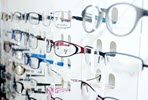Retail optical products include glasses, sunglasses and contact lenses for various applications, styles and uses.
Modern eyewear serves a dual purpose. Eyewear optical products are both vision-correcting medical devices and fashion accessories.
There are many factors to consider such as frame, material, lens type, lens coating and how they will be used (sports, driving, computer work, etc.), which must be reflected in the data design of optical products and supporting business areas.
The data design to support optical applications must be precisely that of optical products in terms of technical specifications and terminology. General retail terms would be necessary and sufficient at a high level to integrate other retail products but fail to meet the detailed requirements associated with optical products.
Specific industry knowledge and data design is the key to application success.
Additionally optical products may be the primary product offered or one of many retail products offered.
The overall design of the optical product and supporting data must support both stand-alone applications for optical products and integrated optical product offerings within a broader product strategy, which requires an expanded knowledge of retail products in general and optical products specifically.
The supporting data architecture must be both specific to and focused upon optical products, supporting business functions and operations - and also compatible with other retail or medical product offerings that exist or evolve over time.
The Optical Product industry models addresses these requirements via an integrated set of Enterprise, Business Area, and Data Warehouse logical data models that support the comprehensive planning, transactional, reporting and analytic requirements of the organization.
| Customer | Manufacturing |
| Product | Forecast |
| Marketing | Advertising |
| Inventory | Financial Reporting |
| Pricing | Business Metrics & Analytics |
| Credit & Collections | Social Media |
Copyright ©
ADRM Software, Inc.
All Rights Reserved



